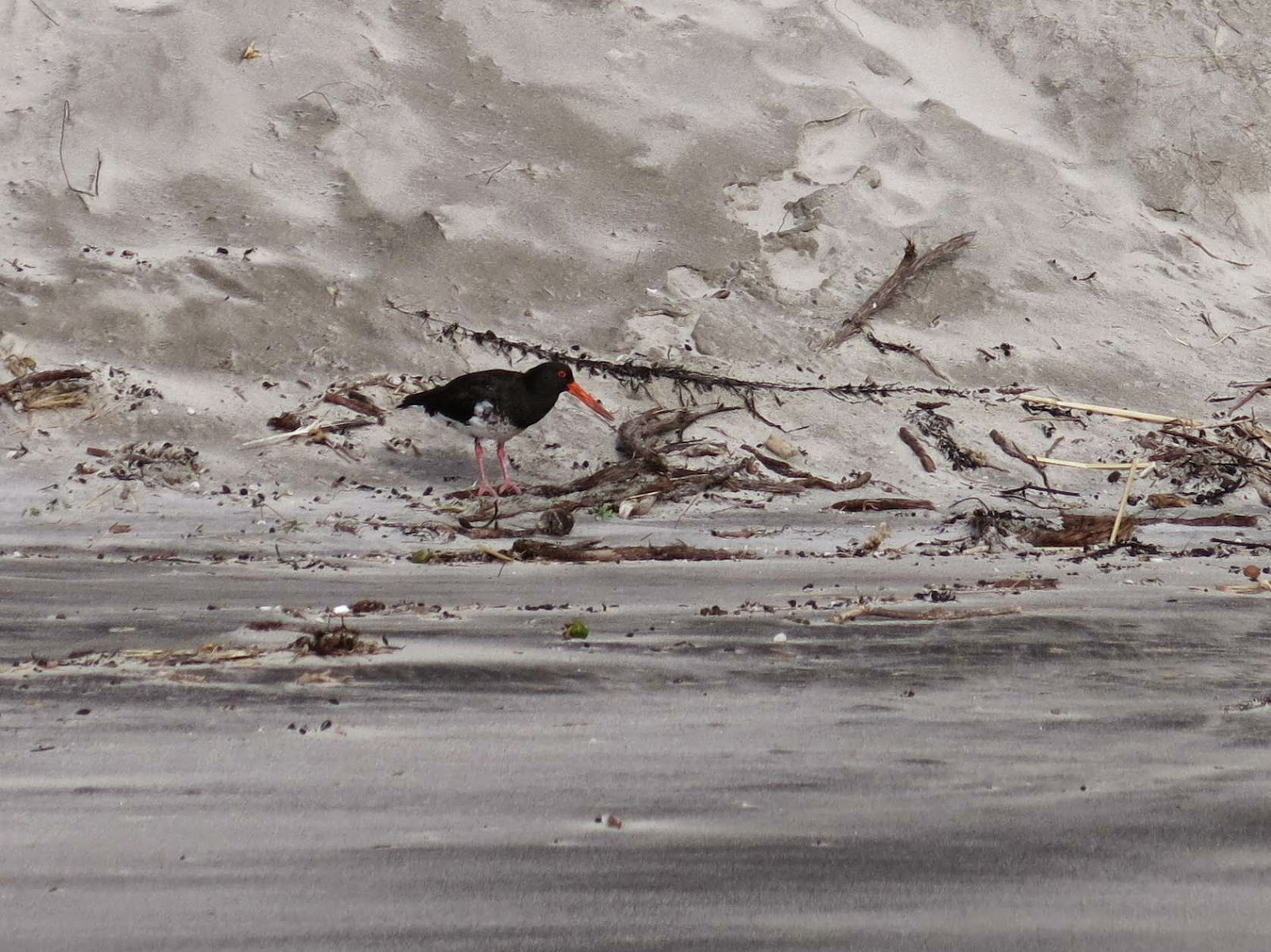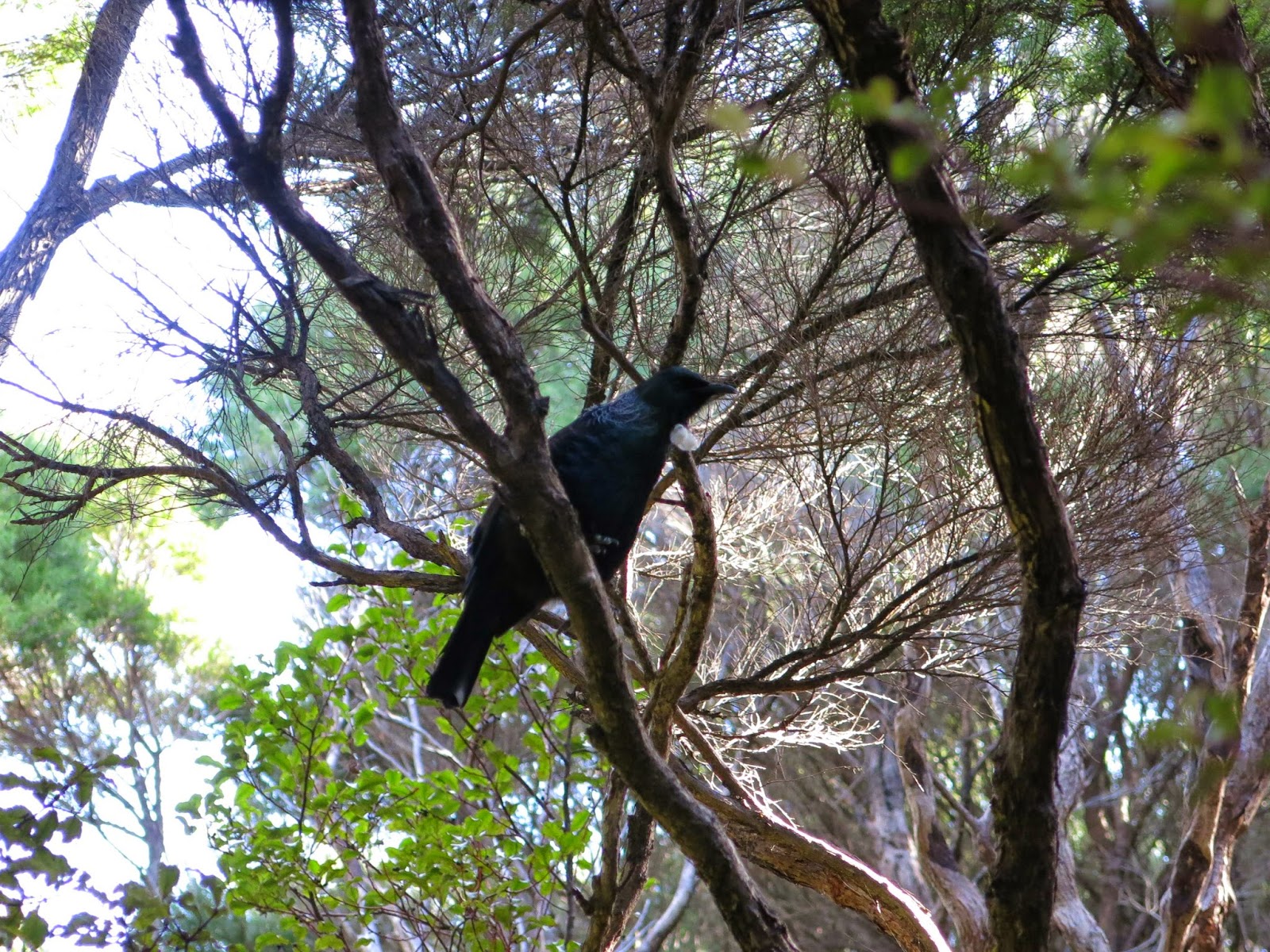Kiwi Birds
The first three nights, we stayed in a cottage at Aroha Island, a kiwi preserve up on the north part of the island. The benefit of this is that we were allowed to stumble around after dark looking for kiwi. It turns out that kiwi really don't like light. The really really don't like light so much that if you want to see them, the only light you can use when walking about is a dim, red, filtered light.
We also learned that they also find the light of the full moon a bit off-putting, and of course we were there when there was a big bright full moon.
As we wandered about in the dark, we could definitely *hear* the birds poking about in the brush looking for food, and we heard the occasional call, but we couldn't actually see any, as they all stayed in the deepest darkest corners they could find. Still, it was very interesting to sit silently outside in the bush in the dark, listening to all the night noises. Bringing the focus down to just one sense when exceedingly jet-lagged was sort of surreal, but it brought about an intense set of awareness of the surroundings that us mostly urban dwellers don't often experience. Very cool to listen to the kiwi, even if we didn't see any in the wild.
We did see a couple in the Otorohanga Kiwi House later in the trip. Very funny-looking birds -- sort of like two animate drumsticks with a large beak, running around in circles. And of course, one ran across representations of kiwi everywhere.
We found oystercatchers all over the beaches. Given the number of oysters and other shellfish uncovered on the rocks at low tide, this wasn't surprising. I like their bright orange beaks and eyes.
Tui. We called this one the R2-D2 bird, as it can make the most amazing series of varied sounds with its two voice boxes. These were all over the place, and according to one of the staff at Aroha Island, have different calls in different parts of the island due to their habit of mimicking all interesting local sound sources. We did hear one that sounded just like a car alarm at one point.
The silver tree fern. Not a bird, but the defining plant of the forested areas where we went, and in my mind they are associated with all the bird noises.
New Zealand Swamp Hen. These were so surprisingly colorful for birds just wandering about in the warm pools at the city park.
Baby swamp hen. Cute!
Also not a bird, but this tree's roots looked just like a big bird foot. The moa, the island's largest bird, is now extinct, but one might imagine it had a foot like this. Either that, or the also-extinct giant eagles that used to eat the moa.
Black swans. We also saw these all over the place.
I think this one is a kawaupaka, a type of cormorant. He had a scenic spot to hang out.
Probably the most common bird we saw: the fantail, or piwakawaka in Maori. These were ubiquitous, and had a goofy random-seeming flight pattern, until you realized they constantly scoop up bugs as they fly. Very agile little critters.
The spur-winged plover that followed us all the way around
the Otorohanga Kiwi House.
One of Nim's favorites, the New Zealand Scaup.
Very Fat New Zealand Pigeon. Birds here had no traditional land predators, which I guess drove the pigeons to be extra big.
North Island Kaka. This guy was curious and crazed, but it may just be that he knew lunch was coming!
Kea.
Ooops -- also not a bird. This one is a tree tomato, or tamarillo. I ate one of these at breakfast one morning without knowing what it was, and then found out that most people cut them in half and scoop out the goopy stuff inside (I chowed the whole thing). Not bad.
One of the big problems for the birds in New Zealand in this day and age are invasive predators of the mustelid family. Nimue likes mustelids, so had to pose by the poster describing their evils.
Ooooh -- a gull.
Nimue knows what to do about these.Even the geese were different. I can't help but wonder if these ones are good eating. Must mean it is time to go make dinner.























No comments:
Post a Comment